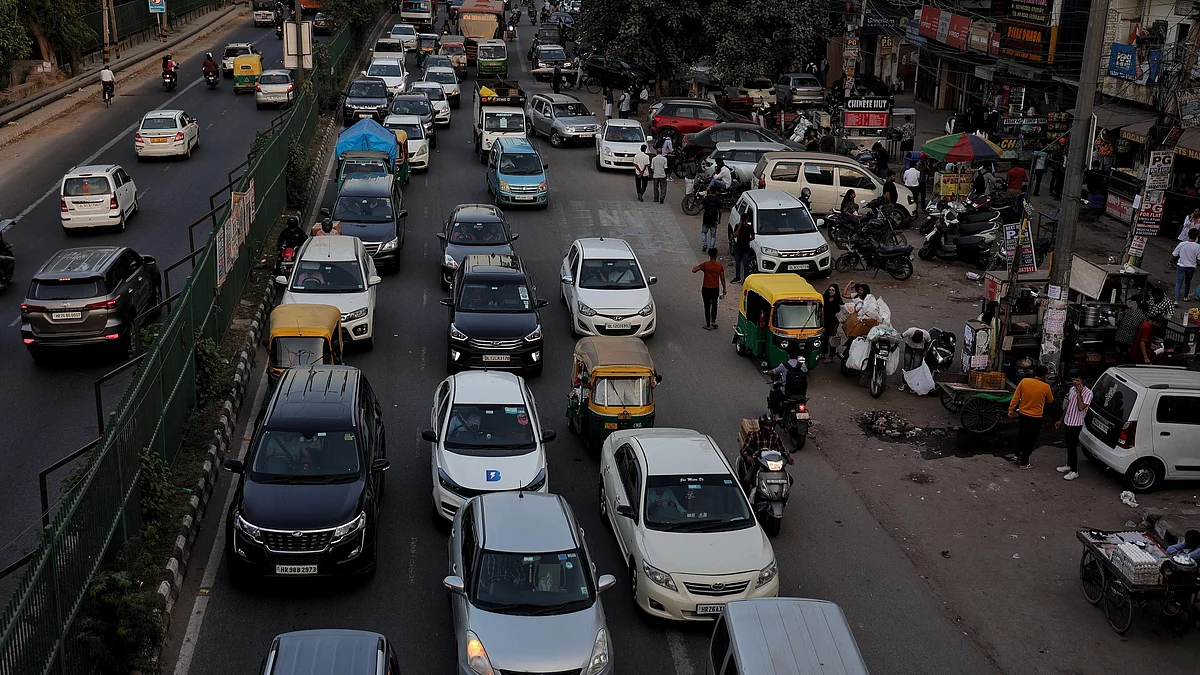Nation
Indian roadworks pitted with fund scarcity, debts, poor construction
India’s determined push for road and highway construction has drawn international attention. But not all is going well, despite the government’s optimism

Nitin Gadkari, the Union minister in charge of road transport and highways, is fond of quoting former US president John F Kennedy, who had ostensibly said that American roads were good not because America was rich, but America was rich because American roads were good.
It is a different matter that his colleague in the BJP (Bharatiya Janata Party) and the Madhya Pradesh chief minister Shivraj Singh Chouhan, on a visit to the United States, had boasted that roads in Madhya Pradesh were better than those in the US. Indeed, Gadkari is also on record saying that India’s highways will be on par with the freeways of the US by 2024.
The Union government’s emphasis has been on increasing investment in infrastructure. Finance minister Nirmala Sitharaman, while presenting the budget this year, had claimed that the government’s approach is driven by "seven engines, namely roads, railways, airports, ports, mass transport, waterways and logistics infrastructure". Gadkari and the rest of the government do take immense satisfaction in the gleaming new highways that are shortening distances, cutting down on travel time and reducing the cost of transportation.
Not everyone is impressed, though.
Published: undefined
Experts concerned with sustainability point out that what India needs is affordable and faster, low-cost train network, not fancy highways and bullet trains. Pointing out that merely 2 per cent of Indians own cars, they argue that while highways will ensure speedy travel between the outskirts of one city to another, they would add to vehicular congestion inside the cities and add to the pollution and fuel costs.
On paper, some experts contend, India’s road infrastructure is better than China’s. Our cumulative road network at the beginning of 2022 was 5.9 million km, which is longer than China's (4.6 million km), though slightly smaller than the US's (6.7 million km).
However, only 3 per cent of these roads in India were national highways, and 75 per cent of the highways are only two-lane. Roads as a result are congested and road maintenance is underfunded. At the same time, 40 per cent of the roads are dirt roads, and over 30 per cent of our villages have no access to all-weather roads.
China’s highways have more or less tripled from around 50,000 km in 2000 to around 160,000 km by the end of 2020. In just two decades, China had added highways that are 20 per cent longer than the entire US interstate highway system. India, too, has tripled its highways over the same duration, but the network is far less impressive than China; because they are of lower quality, narrower, less well-maintained and only make up a very small part of the total system of roads in the country.
A parliamentary standing committee report in 2021 suggested that more than 800 road projects were running late and were delayed. The Bharatmala Pariyojana – Phase I, which is crucial to coastal and port connectivity and which was targeted to be completed in 2021–22, has been put off to 2025–26.
Published: undefined
The National Highway Authority of India (NHAI) and the National Highways and Infrastructure Development Corporation Ltd (NHIDCL) aim to connect remote regions and improve connectivity for both urban and rural areas. The total length of the national highways under the NHAI is 1,411,90 km. Although they comprise only 2.2 per cent of the nation's full road length, they carry over 40 per cent of all traffic.
The government has relied heavily on loans to fund road projects, significantly increasing the NHAI's debt burden. The ministry of road transport and highways has stated that the NHAI will exceed Rs500 billion in debt servicing costs by FY28, as estimated and shared with a parliamentary standing committee. As the NHAI's debt surged between 2017–18 and 2021–22, the government prohibited further lending in 2022–23.
Besides funding constraints and the reluctance of the private sector to invest in roads, some of the other obstacles on the road (pun intended) to timely project completion include land acquisition issues, environmental concerns and coordination bottlenecks between the states and the Union government, sources say.
Inadequate planning and unreliable assessments of environmental impact have also plagued the projects, leading to irreversible damage to ecosystems, encroachment on protected areas and disruption of local communities.
Experts also wonder if the financial viability of new highways has been evaluated to avoid underutilised assets and a higher burden of maintenance costs.
Published: undefined
Follow us on: Facebook, Twitter, Google News, Instagram
Join our official telegram channel (@nationalherald) and stay updated with the latest headlines
Published: undefined